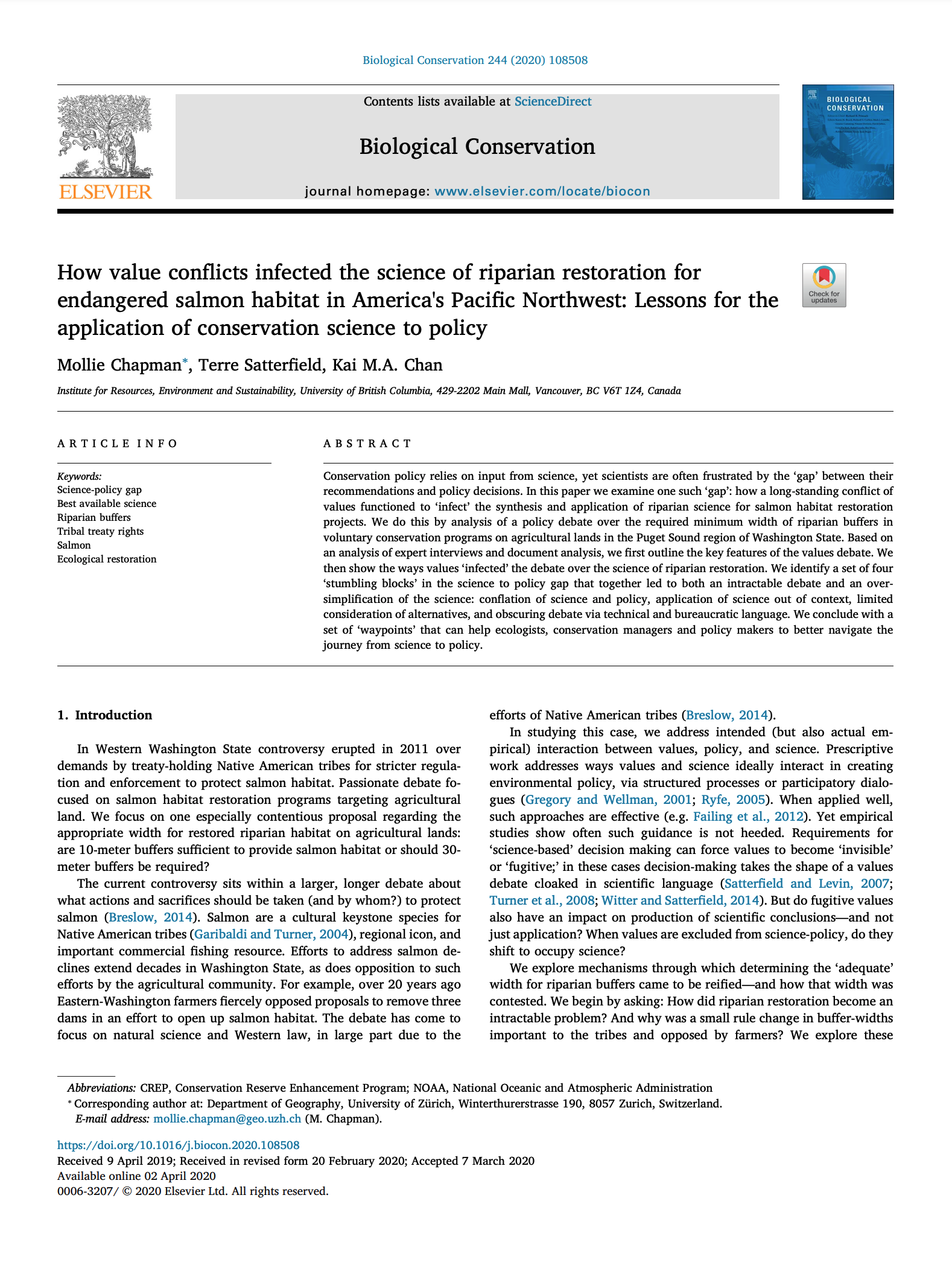
Conservation policy relies on input from science, yet scientists are often frustrated by the ‘gap’ between their recommendations and policy decisions. In this paper we examine one such ‘gap’: how a long-standing conflict of values functioned to ‘infect’ the synthesis and application of riparian science for salmon habitat restoration projects. We do this by analysis of a policy debate over the required minimum width of riparian buffers in voluntary conservation programs on agricultural lands in the Puget Sound region of Washington State. Based on an analysis of expert interviews and document analysis, we first outline the key features of the values debate. We then show the ways values ‘infected’ the debate over the science of riparian restoration. We identify a set of four ‘stumbling blocks’ in the science to policy gap that together led to both an intractable debate and an oversimplification of the science: conflation of science and policy, application of science out of context, limited consideration of alternatives, and obscuring debate via technical and bureaucratic language. We conclude with a set of ‘waypoints’ that can help ecologists, conservation managers and policy makers to better navigate the journey from science to policy
